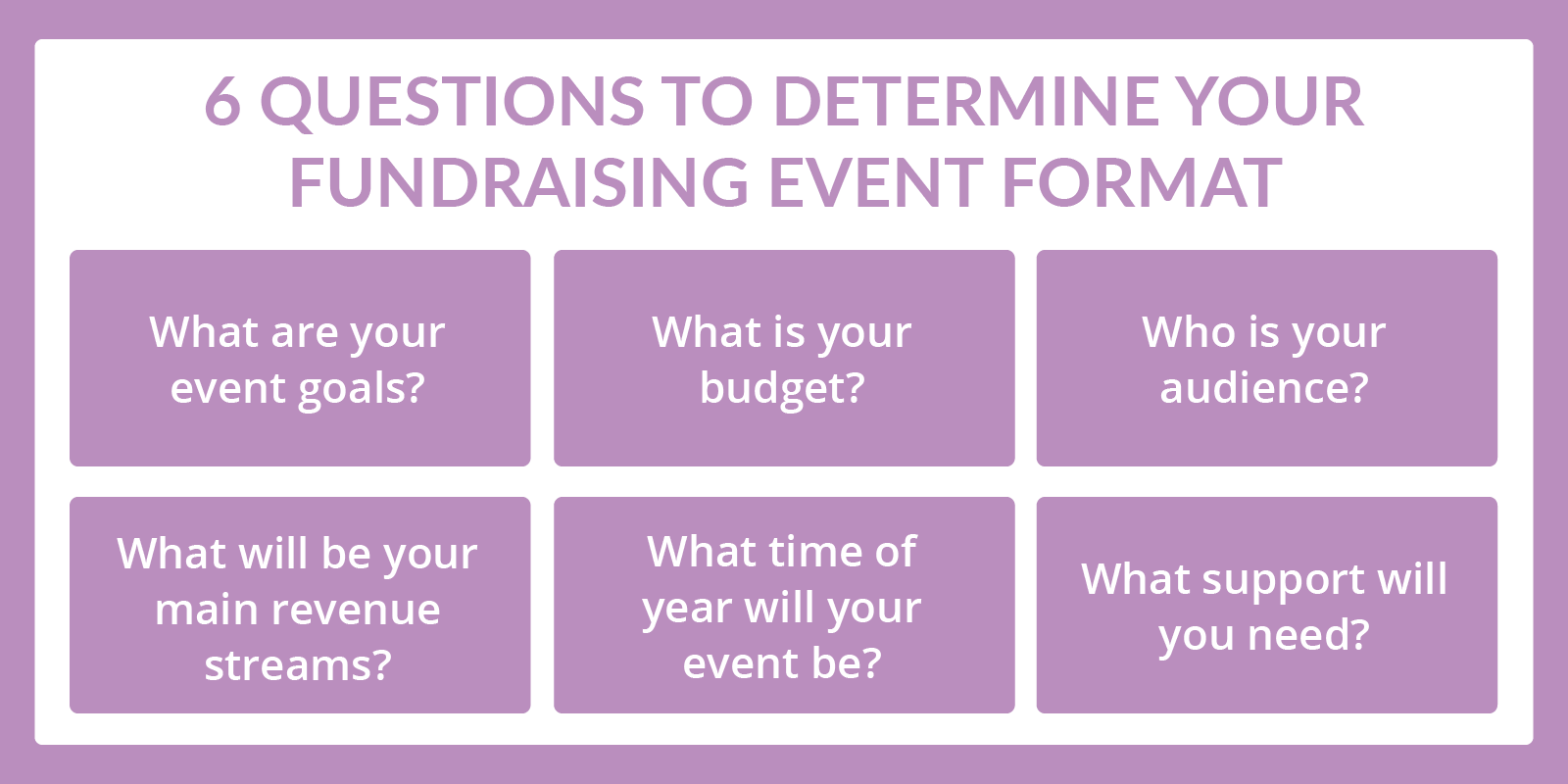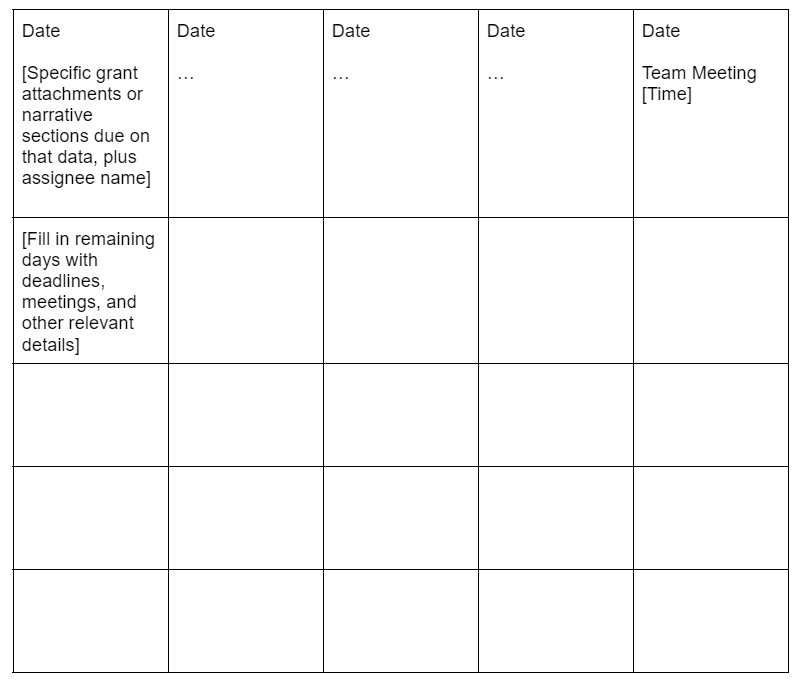Your nonprofit may already have a strong support base, but even the most passionate individuals need reminders and motivation to attend your events regularly. That’s where having a strategic event promotion plan comes in.
This quick checklist will walk you through essential steps to ensure your event gets the attention it deserves, drives registrations, and leaves a lasting impression on attendees. Let’s dive in.
1. Planning Your Event Promotion
Laying the groundwork before promoting your event can save time, prevent confusion, and maximize your reach. Take this time to clarify what you’re promoting, who you’re trying to reach, and how you’ll measure success.
Define Your Event Goals and Target Audience
Before crafting any promotional messages, take a step back and define what success looks like for your event. Are you aiming to drive ticket sales, attract new donors, increase gift sizes, or boost your nonprofit’s brand awareness?
Once you know your goals, hone in on your audience. Are you targeting current donors, lapsed donors, or potential corporate partners? Knowing who you’re trying to reach will shape your campaign’s tone, timing, and channels.
Prepare Your Promotional Assets
Set your campaign up for success by gathering everything you’ll need to promote the event, including:
- Branded visuals and event graphics
- Speaker headshots and bios
- Sponsor logos and special offers
- Core event messaging (tagline, benefits, key takeaways)
Having these assets ready ensures consistency across all channels and makes it easier for partners and team members to help spread the word.
2. Leveraging Your Owned Channels
Your organization’s owned channels, such as email lists, website, and blog, are some of your most powerful tools for promoting your event. These channels allow you to reach an audience that already knows and trusts your organization, making it easier to drive interest and registrations.
Promote Through Email Campaigns
Email is one of the most effective ways to notify your audience about upcoming events. Create a strategic email sequence that builds excitement and provides essential information over time, including:
- Save-the-date email: Announce the event early and encourage recipients to mark their calendars.
- Event highlights email: Share details about specific activities or benefits associated with your event.
- Reminder emails: Emphasize registration deadlines, early bird pricing alerts, or last-chance reminders.
Segment your email lists based on characteristics such as interests, past event attendance, or giving history to personalize your messaging and improve engagement.
Use Your Website and Blog
Your website is the central hub for your nonprofit’s activities, so make sure your event is front and center. Add event banners, homepage CTAs, or pop-ups to direct users to your event landing page.
Consider writing blog posts about the event theme and impact. These articles can serve as both educational content and promotional tools, encouraging readers to learn more and register.
3. Expanding Reach With Earned and Paid Media
To promote your event effectively, you’ll want to look beyond your nonprofit’s email list and website. Expanding your reach through earned and paid media can help you connect with new supporters and potential attendees who may not already follow your work.
Collaborate With Partners and Sponsors
Your event partners, sponsors, and community allies can play a key role in spreading the word. These organizations often have their own audiences who care about similar causes. Reach out to them early and encourage them to help promote your event. Make it easy by providing a simple toolkit that includes event details, suggested social media posts, and promotional graphics they can share.
This kind of collaboration extends your reach and strengthens your relationships with key stakeholders who want to see your event succeed.
Connect With Local Media and Community Outlets
Earned media coverage is another powerful way to promote your event without a large budget. Reach out to local news outlets, community blogs, radio stations, or industry publications that align with your mission. When pitching your event, focus on what makes it newsworthy, whether it’s:
- The event’s impact
- Stories illustrating why your cause is important
- The involvement of notable speakers or performers
Don’t forget to submit your event to free community calendars and local event listings. These are often overlooked but can drive significant local attendance.
Invest in Paid Social Media Advertising
If your budget allows, supplement your organic promotion efforts with paid social media advertising. Platforms like Facebook and Instagram allow you to target specific demographics, locations, and interests—making it easier to reach potential attendees who care about your cause.
Consider creating ads that:
- Highlight special event features
- Promote early bird pricing or limited spots
- Retarget people who have visited your website but haven’t registered
Even a modest social media advertising budget can make a significant difference in expanding your event’s visibility.
4. Maximizing Social Media Promotion
Social media is one of the most versatile tools in your event promotion toolkit. It allows your nonprofit to create buzz and actively engage your community online.
Create a Consistent Posting Plan
Rather than posting sporadically, build a schedule that promotes your event at regular intervals. Mix up your content to keep it engaging. Share:
- Behind-the-scenes event planning
- Speaker spotlights
- Countdowns
- Highlights from past events
Use eye-catching visuals and videos to stand out in busy newsfeeds. A consistent presence across platforms like Facebook, Instagram, LinkedIn, and X (formerly Twitter) keeps your event at the top of followers’ minds and makes it easier for them to share it with their networks.
Encourage Conversation and Community Engagement
Social media is most effective when it’s interactive. Ask questions, run polls, or prompt followers to share why they’re interested in attending. You might invite past attendees to comment with their favorite moments from last year’s event or tag friends who should join them this time.
This kind of engagement helps build community around your event and can naturally extend your reach as people comment, like, and share your posts.
5. Tracking Performance and Optimizing
Effective event promotion doesn’t stop once your materials go live. Using your event management tools to track what’s working (and what’s not) allows you to make informed adjustments and improve your results over time.
Monitor Key Metrics
Start by identifying which metrics matter most for your goals. For registrations, keep an eye on website traffic sources, conversion rates, and email click-throughs. On social media, watch for engagement levels, reach, and link clicks.
If you’re running ads, monitor their performance daily. Platforms like Facebook Ads Manager provide insights into impressions, cost-per-click, and conversions, helping you make quick decisions to boost your results.
Make Data-Driven Adjustments
If an email has low open rates, try a new subject line and resend it to non-openers. If a social post isn’t getting traction, test a different visual or caption. Not seeing the registrations you expected from a particular channel? Reallocate your budget or efforts to the platforms driving better results.
By regularly reviewing your performance and optimizing based on real-time feedback, you give your nonprofit event the best chance of success.
Promoting a nonprofit event takes more than a few social posts and an email blast. It requires thoughtful planning, consistent communication, and strategic outreach. By following this quick checklist, your nonprofit can build awareness, drive registrations, and ultimately execute a successful event that powers your mission.
Remember, effective promotion isn’t just about filling seats; it’s about engaging your community, strengthening relationships, and creating meaningful connections that last well beyond the event itself. Use these steps as a guide, track your results, and refine your approach over time. The more intentional you are with your promotion efforts, the more impact your events will have.



